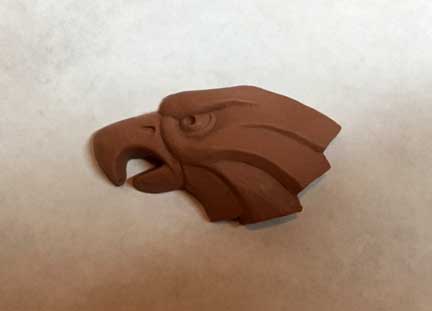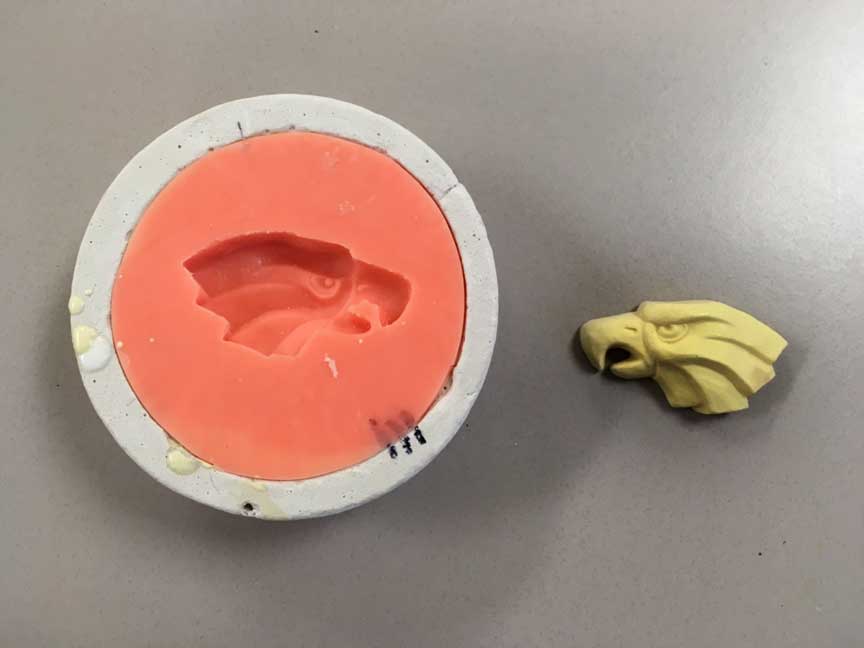First, a wall is made: Either with oil based clay or a paper cup cut to size and hot-glued to a board.
Next, the silicone is mixed:
The High Temp Silicone we use is mixed in a 10:1 ratio.
10 parts silicone to 1 part catalyst.
(So if you're using 80 ML of silicone, you'd mix in 8 ml of catalyst.)
Students are to make a mold for their Oil-clay project so we can cast it in resin and in Metal.
Evaluation:
2 points -- Mold walls made correctly
3 points -- Silicone mixed and poured correctly
2 points -- Minimal bubbles in the mold
3 points -- Mold cleaned up and deflashed properly
10 points total
Illustration 1 below is the original piece made with Chavant clay.

Illustration 2 below shows the silicone mold and plaster mother-mold with the finished cast piece.

Below is a Durometer chart. Our silicone is a High Temp., high durometer RTV silicone. Ours falls between 40 and 60 on the Shore A scale.


Illustration 2 below shows the silicone mold and plaster mother-mold with the finished cast piece.

Below is a Durometer chart. Our silicone is a High Temp., high durometer RTV silicone. Ours falls between 40 and 60 on the Shore A scale.


